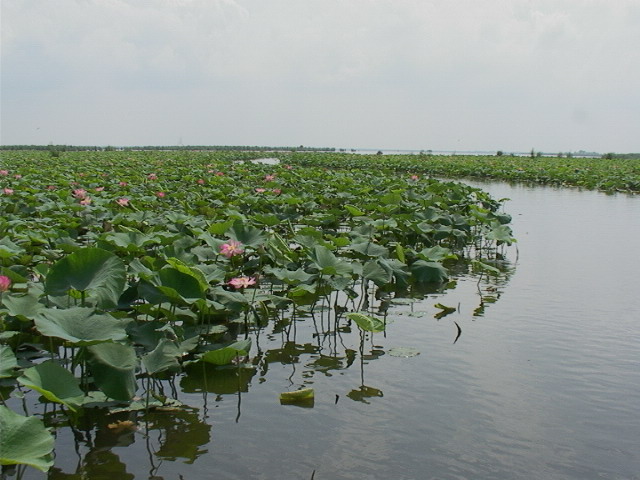Measures to rid the ecologically-rich Anzali Wetland in the northern Gilan Province of water hyacinth have failed prompting calls for a bigger budget to address the problem.
“Despite efforts from provincial officials and locals, none of the purported solutions have been able to deliver due to the plant’s fast growth rate, which allows it to spread far and wide,” said Hassan Khastehband, a lawmaker from Anzali.
“To effectively address the growing problem, we need substantial funding for the working group tasked with solving the wetland’s problem,” he told Mehr News Agency.
Last September, news broke that water hyacinth, native to the Amazon basin, has begun growing in the wetland’s southernmost region. Water hyacinth is a floating plant with thick, glossy, round leaves, inflated leaf stems and very showy lavender flowers.
The plant is swiftly and aggressively covering the entire wetland, which can dramatically impact water flow, block sunlight from reaching aquatic plants in the depths of the water and starve the wetland of oxygen, killing whatever marine life it hosts. The physical biomass can prevent boat movement or angling.
Like most other environmental issues in Gilan involving water, this problem may very well extend to the Caspian Sea, and there is no telling how severe the impact will be. Given the size of the sea, controlling the spread of invasive species in the Caspian Sea will be a herculean task.
Imported Item?
While it is not exactly known how water hyacinth found its way into Iran, some experts speculate that the plant was imported.
Water hyacinths are in high demand as household plants due to their muted purple color.
Controlling the growth and spread of water hyacinth, called by some plant scientists as the worst aquatic plant species, requires millions of dollars every year, highlighting the importance of curbing imports of the highly invasive species.
The wetland already suffers from high levels of sedimentation and has become a dumping ground for urban and industrial waste, which together have reduced the depth of the wetland by nine meters in 40 years.
Reduction of the wetland’s depth is turning the lagoon into a flood risk by hampering its ability to hold water: in case of heavy rainfall, it will be unable to perform its natural function and Anzali will face a major environmental disaster.
Located in the evergreen Gilan Province, Anzali Wetland is an internationally-recognized lagoon in northwest Iran.
A combination of natural factors and human activities has resulted in the wetland losing more than three-quarter of its size since the 1930s.


